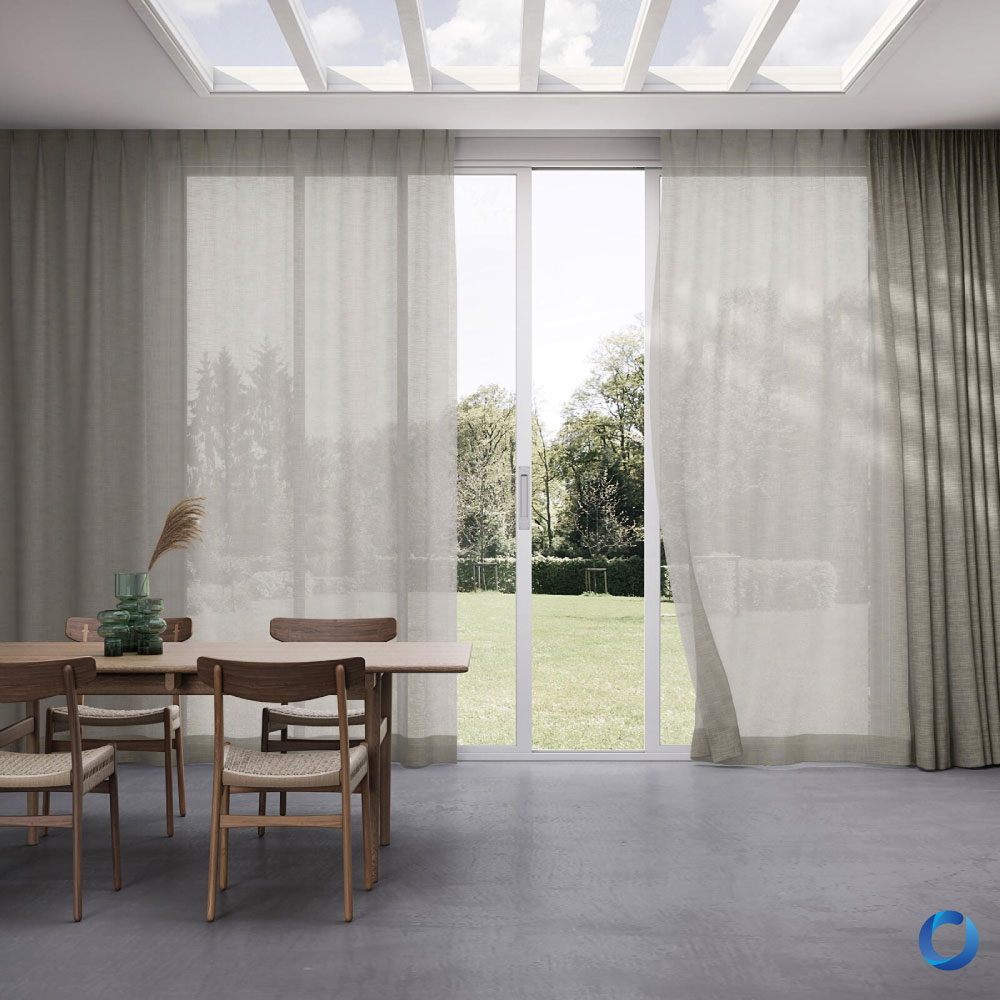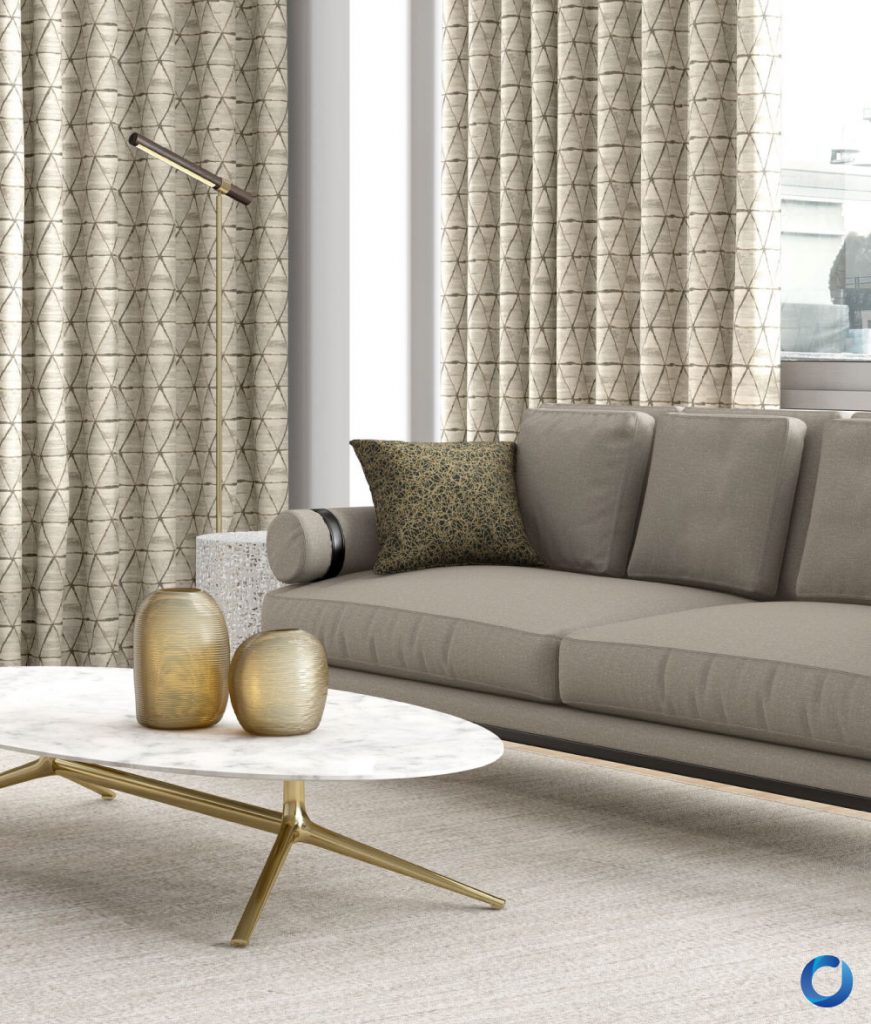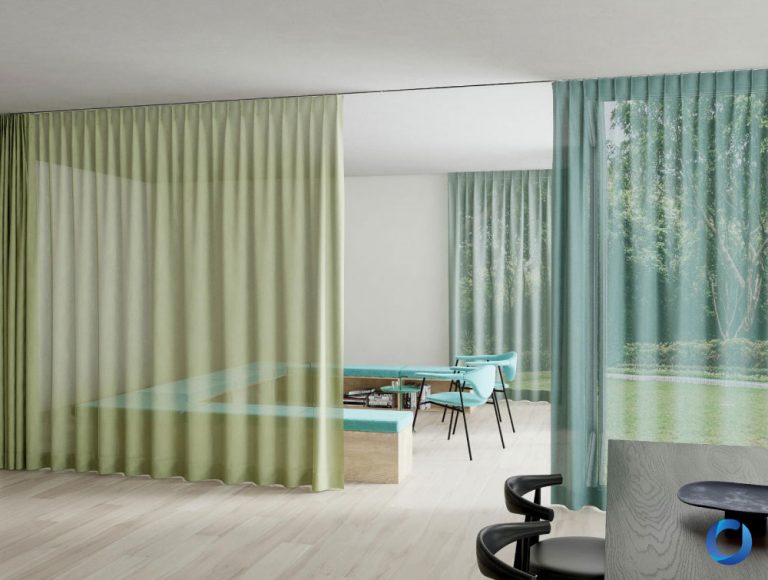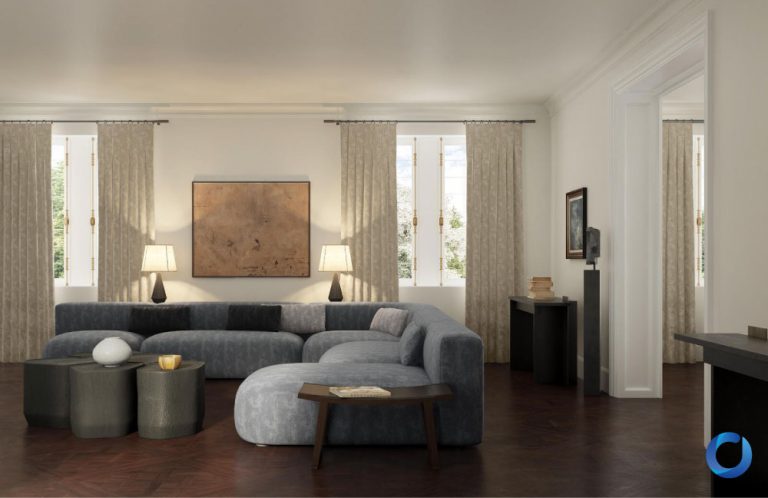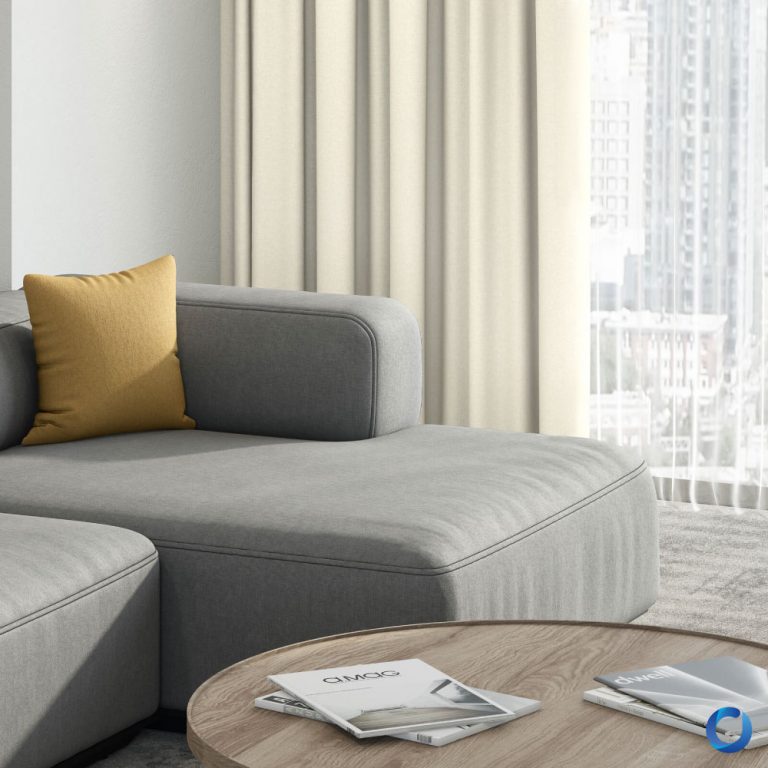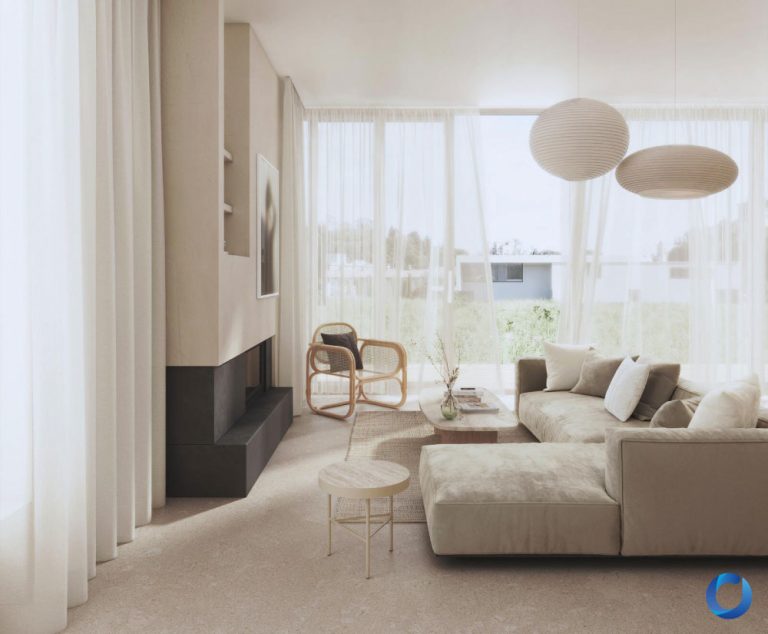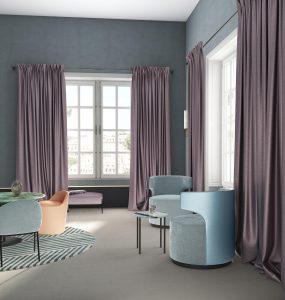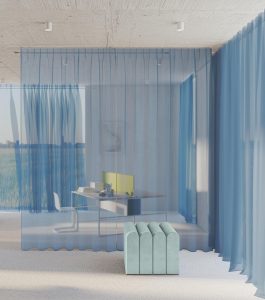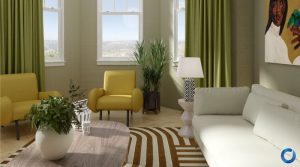
Picking out curtains for your home is all about getting the perfect style for each room. After all, different window treatments can serve various functions and it is important to match them to the purpose of space.
Choosing the right curtain fabric largely depends on the ambience and mood you are trying to achieve in each room. For example, in a kitchen, you would typically want light and breezy fabrics to keep the room airy, while curtains in the bedroom should be dark and cosy to promote a good night’s sleep. This can also impact the room’s temperature as the right combination of fabrics can help filter harsh sunlight and keep your home comfortable.
Beyond just the look of the curtain, understanding fabric types and composition will also impact the functionality of your curtains. Today, many European brands such as FibreGuard, Fabric Library and Mercis offer innovative curtain fabrics equipped with UV protection, fire retardation and even anti-microbial properties
From fabric types and room-by-room recommendations to care and maintenance tips, here is a guide to the best European curtain fabrics for every room.
Factors for fabric choice
When selecting curtain fabrics, the main criterias you should be looking at are the material’s opacity, insulation properties, durability and general maintenance.
1. Light control: Blackout vs. sheer curtains
The key distinction in curtain fabrics lies in opacity. Different fabrics have various levels of light-filtering abilities, ranging from a sheer diffused glow to a complete blackout. Blackout curtains or drapes would typically be made of a thicker, lined fabric that can block the sunlight completely, such as polyester. On the other hand, a sheer curtain is made from a thin translucent material that can filter partial sunlight and provide some privacy, like voile or lace. In many cases, these curtains are often layered together for greater flexibility.
2. Insulation properties
For those living in hotter climates, fabric choice can significantly impact the room’s temperature. Natural fabrics like cotton, linen and sheers help to regulate the amount of sunlight and heat entering the room while remaining lightweight enough to allow air circulation.
In colder climates, however, it is best to opt for thick and heavy drapes like velvet or brocade to prevent cold air from entering and retain heat indoors.
3. Durability: high-traffic areas vs. low-traffic areas
For curtains being used in high-traffic areas such as the kitchen or family room, it is important to choose fabric with a good rub count. Also known as the Martindale test, the rub count is a method to measure how durable a fabric is against abrasion.
Decorative fabric (less than 10,000 rubs) – Fabrics that are less than 10,000 rubs are considered to be mainly decorative like silk. These materials are less suitable for daily use as they are prone to wear and tear.
Domestic fabric (10,000 to 25,000 rubs) – This range is suitable for fabrics being used in the home, such as curtains or bed linens.
Heavy-use fabrics (25,000 to 30,000 rubs) – Fabrics that can withstand more than 25,000 are usually upholstery materials that are used for chairs, sofas and headboards.
Commercial grade fabrics (more than 30,000 rubs) – Any fabrics with more than 30,000 rubs are intended for commercial and public use. These fabrics can withstand high usage and are designed for maximum longevity.
- Maintenance: washability and stain resistance
Cleaning experts suggest washing your curtains and drapes every 6 to 12 months, however, curtains in high-traffic areas such as children, pets and smokers may require more frequent cleaning.
For homes with little ones running around, choosing a stain-resistant fabric that can be spot-cleaned will make maintenance a lot easier. There are also specialised curtain fabrics designed for areas that are exposed to moisture and odours, such as kitchens and bathrooms. Leading performance fabric brands like FibreGuard offer a wide range of high-quality, durable materials that are stain-resistant, antibacterial, moisture-repellent, and fire-retardant. These fabrics are designed for heavy-duty use and are easy to clean.
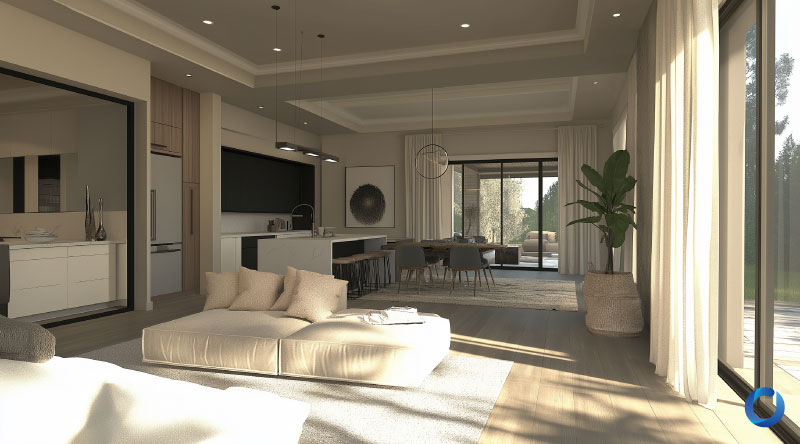
Best Curtain Fabrics by Room
Living Room
As the heart of the home, curtains complete the decor of your living room and also provide practical benefits like light control and privacy. The most popular style of curtains for this space is a blackout curtain paired with a sheer layer. This type of window treatment works best for large or full-length windows, as it provides sufficient privacy without compromising natural light – especially for living rooms that overlook busy streets.
Additionally, sheer curtains help diffuse harsh UV rays, which can damage furniture or artwork displayed in the home. If you’re tired of the usual white-coloured sheer curtains, Slovakian-based fabric supplier Mercis offers a wide range of eye-catching coloured and patterned sheer fabrics to choose from.
Top fabrics:
Linen
If you are looking for ample sunlight with a bit of privacy, linen is the best choice. This natural fabric is lightweight enough to allow light to pour in and can serve as your base curtain or a sheer layer. Many people love linen because its texture creates a warm and cosy feeling to the room. Maintenance-wise it is fairly easy to wash but it does require ironing or steaming as it can easily wrinkle.
Silk
For the more luxurious or fancy living rooms, you can’t go wrong with silk. Due to its glossy finish, many interior designers like using floor-length silk curtains as a way to add grandeur to a space. But if silk is too much upkeep for you, synthetic alternatives like satin can also look similar.
Voile
If you have a slightly small living room and you want it to make it brighter, opt to add a sheer panel made from voile. This airy and breezy fabric is great for making a room feel larger by allowing more light to enter. From a decor perspective, sheers add a subtle softness and a more ‘lived-in’ look to the room.
Bedroom
Furnishings in the bedroom, including the type of curtains you use, can have a big impact on your sleep health. It is common to find heavier, thicker fabrics being used in the bedroom as they can block sunlight, noise and regulate temperature more effectively. For people who are sensitive to light, having blackout curtains is necessary to have good sleep. To get blackout curtains to block out all outside light completely, they will need to have a liner and be hung at full length.
Top fabrics: Velvet Hanging velvet drapes is a lovely way to create a cosy and inviting ambience in the bedroom. Thick and textured, it is great for blocking out sunlight and absorbing unwanted noise. It is also one of the few fabrics that work both in a traditional or modern interior – these days, you will often see interior designers using velvet as an accent fabric for midcentury modern decor. Wool One of the hacks to keeping your home cool in hotter temperatures is to use an insulated material like wool. While you might find this surprising, this hardy and tough fabric is very effective for blocking out direct light and insulating the space, especially if you have an air-conditioner. From ultra-thick alpaca to buttery smooth wool, this material is available in a huge variety of finishes, thicknesses and blends to suit your needs. Polyester For something that is reliable and best for value, you can always go for polyester. It can do similar things as the fabrics above and requires even less maintenance as you can easily machine wash or just simply wipe it down. The only downside to synthetic fabrics like polyester is that these materials are not breathable, especially in rooms without sufficient ventilation.Kitchen
Hanging curtains in the kitchen is a wonderful way to add charm and style to the room, however, you will need to be more mindful of the length and placement. Curtains should not be hung too close to any cooking appliance or the sink as they can pose a safety hazard. Typically, window schemes in the kitchen should be half-length or a shorter style like the cafe curtain. As this area is constantly exposed to spills and moisture, it is encouraged to opt for more durable materials with water-repellent, odour, stain and fire-resistant properties.
Top fabrics:
Cotton
Keeping things light and bright is key to having a comfortable kitchen. In a place that is exposed to heat and moisture all day, having a breathable fabric like cotton will allow just the right amount of air to filter through and prevent cooking odours from getting trapped in the area. A go-to for heavy-duty fabrics is Fibre Guard. This performance-focused brand has a wide variety of odour-resistant and anti-microbial fabrics, including a special fire retardant range, FR-One.
Polyester
If you have a large family with smaller children or pets, a synthetic fabric may work better for you. Less prone to stains and scratches, polyester has more longevity to handle a busy household. A tip is to choose a polyester blend that has anti-bacterial features to deter mildew from growing. Fabric Library has a wide selection of premium, machine-washable fabrics in a variety of designs and colours. Most of their fabrics only require a regular wash cycle to kill 99% of germs and bacteria.
Bathroom
While curtains in the bathroom are often overlooked, there are many practical and aesthetic benefits to hanging curtains in this area. They help to reduce water splashing, provide privacy and even infuse a little style to an otherwise cold and dull room. The trick is to get the right material and liner. Common materials for shower curtains would be PVC but these days there are many organic and synthetic options available in the market. Just be sure to find fabrics that can easily be washed or have moisture-wicking properties to prevent mildew.
Top fabrics:
Synthetic
For a totally water-proof fabric, go for synthetic materials like polyolefin or polyester. These fabrics are great for bathrooms because they are made to handle liquids and resist mildew. FibreGuard Pro, for example, has fabrics with a strong moisture barrier that keeps water out and stops bacteria and mould from growing. Beyond just the bathroom, you can also find them being used outdoors for deck or pool-side furniture
Vinyl
A tried-and-true classic, vinyl curtains can used as a liner to layer with other curtains or just on its own. People tend to prefer this material because it is very cost-effective and has amazing longevity. When shopping for vinyl, do look out for labels that say “PEVA” or “EVA,” which are healthier types of plastic.
Linen
If you have a higher budget, you would definitely love a linen curtain. Softer and more flowy than synthetic curtains, the texture of linen will instantly give you a more luxurious experience in the bathroom. Other plus points for linen is that it is highly absorbent and quick-drying.
Home Office or Study Room
For rooms that require people to be productive and focused, it is important to create a conducive environment. This begins with getting the right level of light, privacy and noise in the space. The curtains in this room should be able to filter the desired amount of light and prevent glaring to reduce reflection on the computer screen. If these rooms are designed for meeting or conference calls, you may consider a thicker fabric to reduce noise and absorb unwanted echoing. A tip to creating a more focused ambience is to choose serene colours like blue or neutrals which can help to calm the brain.
Top fabrics:
Cotton
A medium opacity cotton is one of the best options for these rooms because it lets in just enough light to keep things bright but still filters out glare. It also helps block outside noise and adds privacy, especially for street-level spaces. Cotton curtains come in a variety of patterns and colours, so they are definitely more versatile for any space, ranging from offices to a child’s study room.
Wool
If blocking noise and keeping heat in (or out) is your priority, go for wool curtains. They are thicker and heavier than cotton, so they do a better job of muffling sound. The tight weave also traps cold air, making them perfect for rooms with constant air-conditioning like a conference or meeting room.
Conclusion
Selecting the right fabrics for your curtains is not just about looks, it is how you can improve a room’s function and add visual interest. From the light-reflecting abilities of silk in the living room to the practical durability of polyester in the kitchen, each fabric has something special to offer. By considering factors like light control, insulation, and maintenance, you can ensure the fabrics you have chosen are not only beautiful but are also able to fulfil the needs of each room.
References
H. Reaney (2023, November 23) These are the best curtains for a living room, according to interior designers. Homes & Gardens
https://www.homesandgardens.com/interior-design/living-rooms/which-type-of-curtains-are-best-for-a-living-room
C. Olby (2024, June 29) Should you hang curtains in the kitchen. Homes & Gardens https://www.homesandgardens.com/interior-design/should-you-hang-curtains-in-the-kitchen
M. Malsom (2024, June 12) Where to buy shower curtains. Homes & Gardens https://www.homesandgardens.com/shopping/where-to-buy-shower-curtains
C. Dickson (2023, June 14) Do blackout curtains keep heat out? Home cooling experts suggest they could be a great summer addition. Homes & Gardens https://www.homesandgardens.com/life-design/do-blackout-curtains-keep-heat-out
E. Popp & A. Kelly (2023, November 28) How to choose the best curtains for your bedroom. Martha Stewart https://www.marthastewart.com/8047937/how-choose-bedroom-curtains
Articles suggestion
Article Suggestion :
- Latest Curtain Design 2024
- European Bedroom Curtains: Privacy and Style Combined
- Modern Curtain Designs for Contemporary Homes
- Layered European Curtains for Depth and Elegance
- 2024 Trends in Curtain Designs: What’s New?
- Modern European Curtain Trends for 2025
- European Contemporary Curtain Designs 2024
- Choosing Sheer Curtains for Any Decor
If you are searching for the perfect curtain to express your personality at home, talk to our sales representatives in here.

